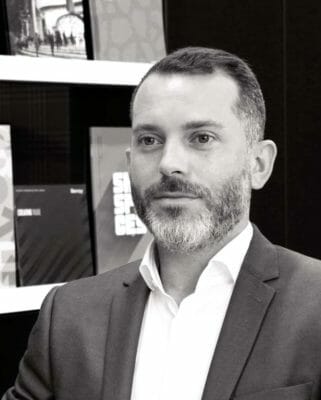
Hakan Agca of Benoy
Global design firm Benoy has unveiled a vision for a new metropolis along Asia’s silk road, creating a masterplan for a twin city for Tashkent, the capital of the Republic of Uzbekistan, on behalf of the central Asian nation’s government.
The company’s planners, architects and designers have worked with the local government to create the operating system for a new city alongside the 2,000 year-old traditional capital, that can help the fast-growing country to accommodate another two million people in the rapidly growing urban hub.
Leveraging big data-driven design technologies, Benoy’s team have created a full land use plan and 3D mockups for the project, which will transform a 20,000 hectare site to enable the traditional community to meet the needs of a growing and prospering population.
Sited to the northeast of the existing city, the first phase of the project, the New City Administrative District, will be delivered to accommodate the Palace – forming the seat of the nation’s government, diplomatic embassies, government ministries and agencies. The twin city also includes plans for a new central business district to enable and support the growing economy, which together with the political centre, will form a new nexus for the growing nation.
To find out more about the project and how Benoy’s team undertook the masterplan project, Mingtiandi spoke with Benoy Masterplanning and Urban Design Lead, Hakan Agca.
Mingtiandi: Designing a 20,000 hectare city is a large project. Is this the biggest project by land area that Benoy has master-planned? How big of a population might the plan be capable of accommodating?
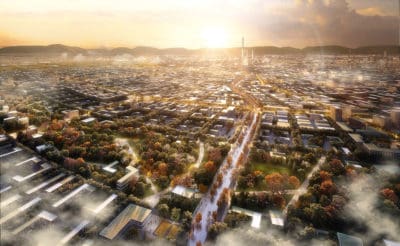
Benoy’s masterplan preserves a traditional canal district
Hakan Agca: Yes, this is the largest new city development in the firm’s history. The masterplan has a target population of two million people, pushing the overall population of Tashkent, including the new city, to over five million upon completion.
Population densities can be increased and decreased as time goes by, but the masterplan will be updated to suit, as the city evolves.
Mingtiandi: How were Benoy’s experiences with delivering masterplanned projects in Greater China and other parts of Asia useful in informing the team’s work in Tashkent?
Hakan Agca: Over the past few years, Benoy’s masterplanning team has developed advanced parametric and GIS (geographic information systems) capabilities, which create exponential efficiencies in the design process and allow the team to utilise more of its time considering the human-centric factors which make cities great.
Our experiences in China and across the Asian continent from Saudi Arabia to Central Asia and beyond have taught us much about specific cultural and historical contexts, the opportunities and constraints of place, differences in environmental and climatic conditions, and aspirations in terms of future-thinking and technology, which vary vastly among regions.
Mingtiandi: In developing a whole city for a rapidly developing nation, what are some of the challenges that you looked forward to?
Hakan Agca: For a project of this scale and scope, one challenge is helping the client to develop the brief. Benchmarking, demographic and economic forecasting are a necessary starting point, but ultimately the success of a city is not just about the numbers.
Macroeconomics can swing through peaks and troughs, but human habits and sensibilities remain relatively consistent, adapting of course to the benefits of advancements in technology, increased mobility and aspirations for a decrease in energy consumption per capita.
As such the challenge is about thinking ahead, and setting out a city vision that responds to a future-thinking brief which considers all of this, so that the city can be best equipped to influence macroeconomics in the future, rather than be wholly dictated by it.
Mingtiandi: In a fast-growing city, how do you design a community that will work for the inhabitants as their needs change over an extended period?
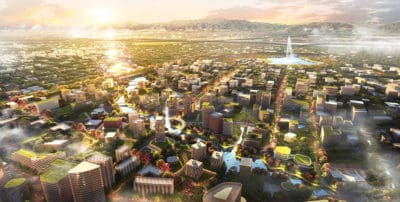
The new capital’s administrative district
Hakan Agca: Cities are made up of hundreds – often thousands – of communities; we design our cities with these firmly in mind. One of our key strategies is to break down the mental and intellectual barriers that come with designing at the mega-scale, and to instead think at the two extremes from the onset.
On the one hand thinking about the overall city framework, infrastructure and landscape is critical to ensuring that the city functions well mechanically; on the other hand, thinking about the neighbourhood and individual city block, ensures that the peoples’ experience of the city through their day-to-day interactions are at the heart of our design.
Designing with modularity in mind, and ensuring the plot, block, neighbourhood, district, zone and city as a whole are all running along common guidelines is essential.
Mingtiandi: How do you integrate a 21st century city with a 2,000 year-old community?
Hakan Agca: The priority is to ensure that the city functions today and in the future. Alongside our wider consultant team we’ve worked hard to ensure the two sides of the city will be well integrated, and that the New City will revitalise the Old, rather than replace it.
As designers we always research and learn from the culture, religion, demographics and architectural heritage of each place we work in, so that we can inform our decision-making, and we are following this same practice for New Tashkent.
While the capital evolved over the millennia, the current Republic, with its newly elected President is looking to make a pathway for its future, rather than look back at Empires past. This is an interesting and challenging task that we look forward to continuing.
Tashkent New City Illustrated
This sponsored feature was contributed by Benoy. All images are courtesy of Benoy Ltd. More information on Tashkent New City is available here.




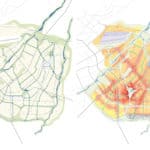
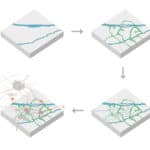
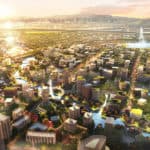
Wow, what an ambitious project